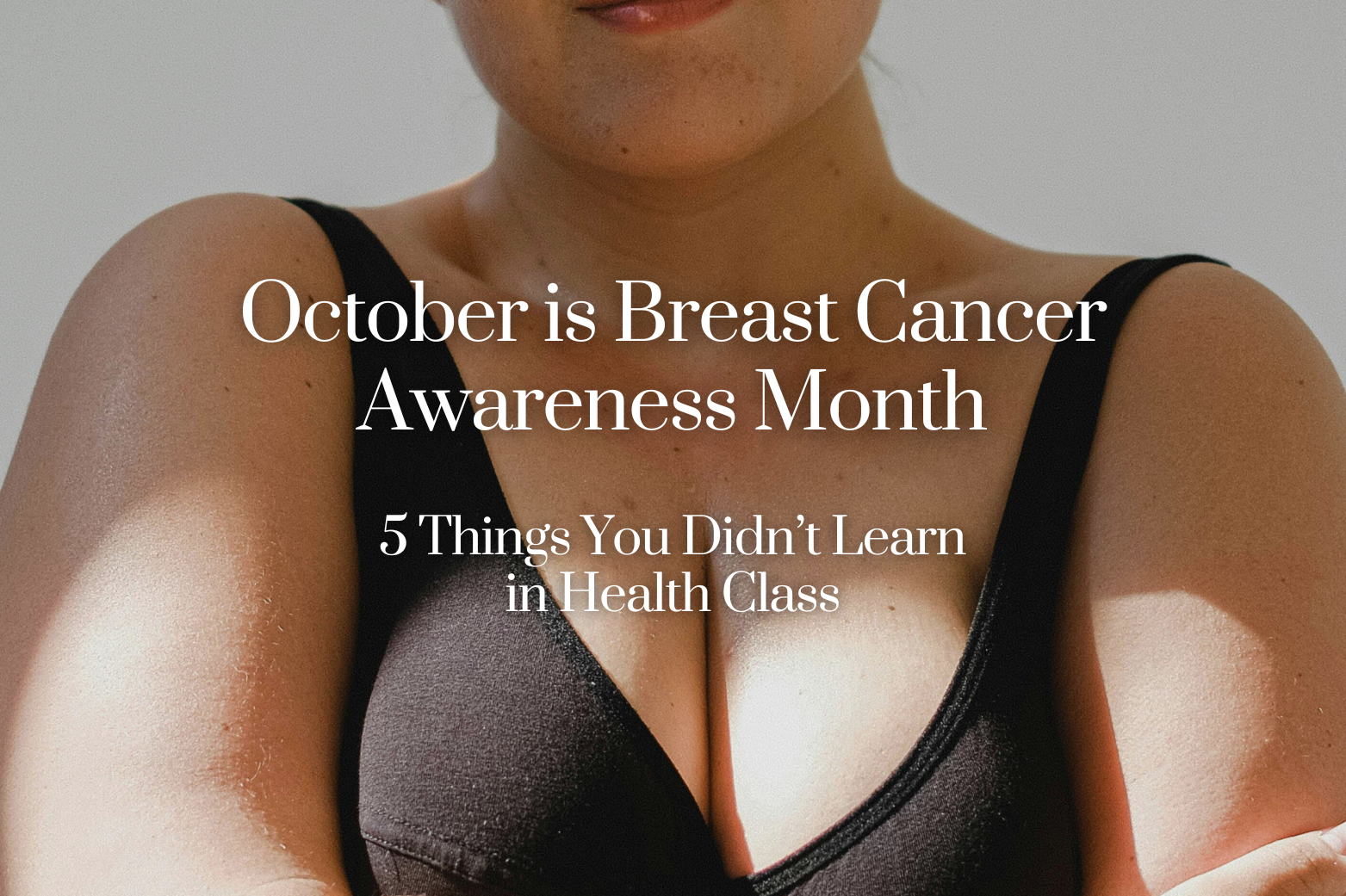If you’re like most women, you probably weren’t taught much about breast health growing up. Beyond puberty, conversations about how our breasts change - and what’s normal - are often left out of health education.
This October, for Breast Cancer Awareness Month, we’re breaking that silence. We’ll explore how breast tissue evolves through different life stages, why “knowing your normal” is key to early detection, and how regular awareness can empower you to take charge of your health.
Why Early Detection Matters
Breast cancer is the second most common cancer worldwide, affecting millions each year. According to the World Health Organisation, over 2 million new cases are diagnosed annually, and 670,000 lives were lost to breast cancer in 2022.
But here’s the hopeful truth: when detected early, breast cancer is highly treatable.
Early detection starts with awareness - understanding how your breasts normally look and feel so you can recognise when something changes.
Know your Normal: What you didn’t learn in Health Class
Your breast health journey is uniquely yours. Understanding how your body changes with time, hormones, and life events helps you stay proactive and confident.
Here are five important things about breast health that probably didn’t make it into your health textbook, but can make all the difference in knowing your normal and protecting your health.
1. Your Breast Tissue Is Unique - and That’s Normal
No two breasts are the same (not even your own!).
Asymmetry, stretch marks, size differences, and varied nipple appearances are all completely normal. The first step in breast health awareness is knowing what’s normal for you.
2. Breasts Change Throughout the Menstrual Cycle
Hormones play a big role in breast changes. It’s common for your breasts to feel sensitive, swollen, or achy before your period. They might even feel bigger in size or heavier during menstruation due to hormonal shifts - that’s normal, too.
Tracking your cycle helps you spot patterns. If you notice something new that doesn’t align with your usual rhythm, bring it up with your doctor. Paying attention to changes at the same point in your cycle helps you identify what’s normal for you.
3. Hormonal Shifts from Birth Control, Pregnancy, and Breastfeeding Can Reshape Breast Tissue
Breast tissue naturally responds to hormones. During pregnancy and breastfeeding, your milk ducts expand, glandular tissue grows, and your breasts may feel denser or more tender. You might notice darkened areolas or visible veins - all normal postpartum changes.
Birth control and hormone therapy can also affect breast texture or size, especially when starting or stopping them. So check in with your body after major hormonal or life changes - and get reacquainted with what your normal looks like.
4.
Breast Tissue Changes with Age
Breast tissue begins developing in the womb and continues evolving throughout life. During puberty, oestrogen drives the growth of glandular tissue, ducts, and fat - which can cause tenderness or uneven development.
Younger women typically have denser breast tissue, which can make tumours harder to detect via mammogram, but this changes over time. As oestrogen levels drop during perimenopause and menopause, breasts usually become softer and less dense.
While breast cancer risk increases with age, the good news is that mammograms become easier to interpret and early detection remains highly effective.
5. Knowing Your Normal Is the Foundation of Early Detection
The most powerful tool you have is your awareness. Early detection isn’t just about mammograms - it’s about trusting your intuition and noticing when something changes.
Most breast changes aren’t cancer, but every change deserves attention. If something feels off, speak up. You know your body best. If something doesn’t feel right, trust your gut and talk to your doctor or GP.
Resources and Support
- World Health Organisation
- National Breast Cancer Research Institute, Ireland
- Breast Cancer Ireland
- Breast Cancer UK
- NHS How to check your breasts
- Cancer Research UK



